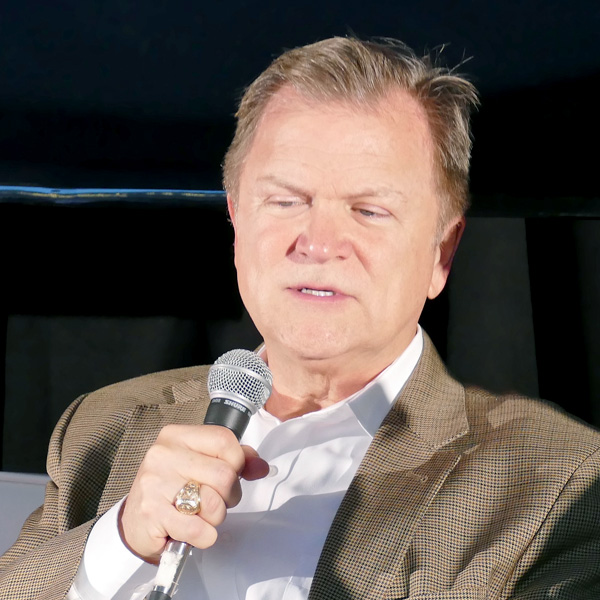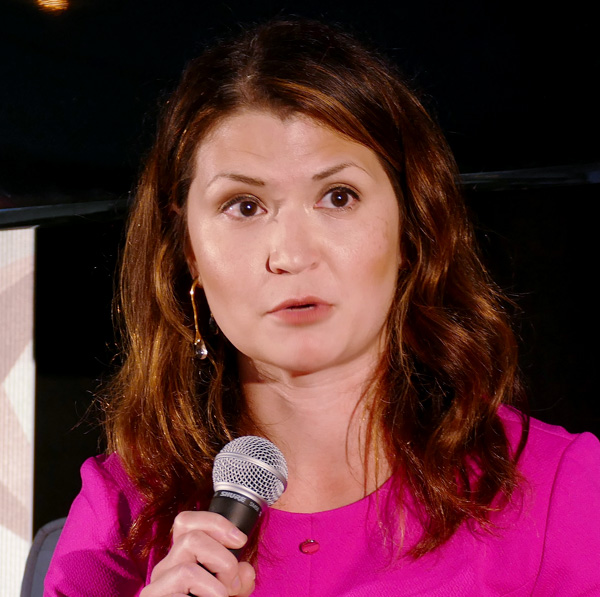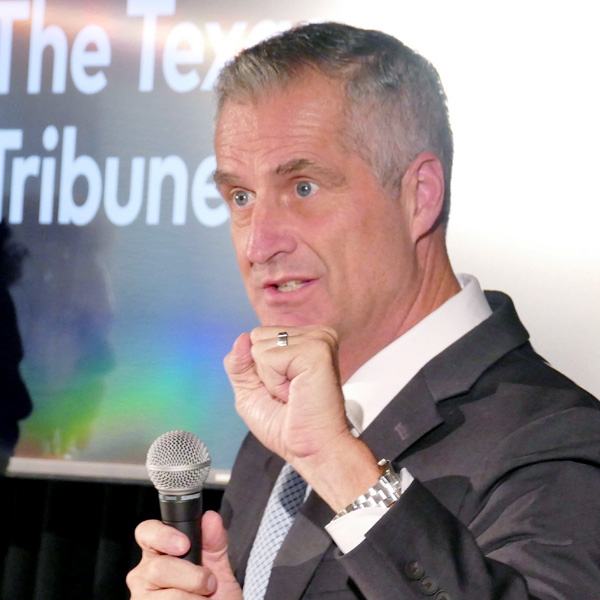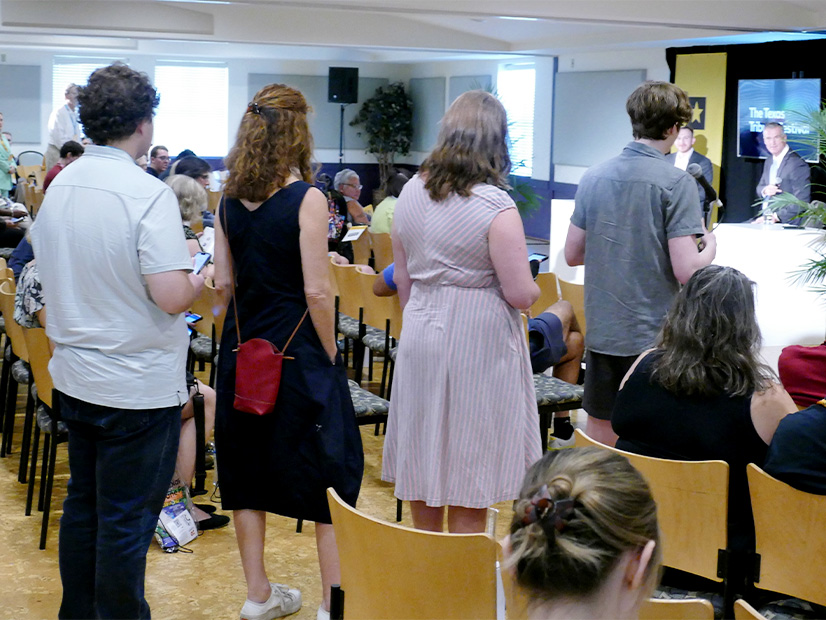 Pat Wood, Hunt Energy | © RTO Insider LLC
Pat Wood, Hunt Energy | © RTO Insider LLCAUSTIN, Texas — Pat Wood, former chair of both FERC and Texas’ Public Utility Commission, put his street cred to the test Saturday during one of The Texas Tribune Festival’s more non-political panel discussions.
Jumping at the chance to advise Texas lawmakers on what they should do with the state’s proposed market changes, Wood referenced requests by legislators during recent testimony by ERCOT and PUC representatives that they be given a chance to weigh in on the market design before the grid operator begins to implement it. (See Texas Lawmakers to Vet ERCOT Market Redesign.)
“That disturbed me the most,” Wood said. “If anybody out here walks away with any message, it’s that we’ve got to get that investment signal out now. If we’ve got to wait a year … we’ve kicked that can a year or two down the road. It was my hope that the PUC would lock and load here by Christmas.”
Wood said that when Texas deregulated the ERCOT market in 1999, “people were already putting steel in the ground” when the legislation became law, resulting in some 30 GW of natural gas-fired facilities being built.
“It was clear from that from [then-Gov. George W. Bush’s] signature [on the bill] that this is the law of the land, and we’ve got this open market and the old utility inefficient power plants are going to be shut down … and everybody came in. So that investment signal is just absolutely important.”
 Caitlin Smith, Jupiter | © RTO Insider LLC
Caitlin Smith, Jupiter | © RTO Insider LLC“I think they need to focus on the incentives that bring things to the market,” said Caitlin Smith of energy storage-provider Jupiter Power, who was previously an attorney with ERCOT’s Independent Market Monitor.
“It’s a competitive market, right? It’s a marketplace,” Smith said. “We’ll have wind, solar, bitcoin mining, all of that. I think it’s much better to let the market incentivize that than to legislate that kind of like anything else. I think you really want the input of the people investing in ERCOT because we rely on those investment signals to provide reliability. So you don’t want to put something too prescriptive. You need to encourage the correct incentives for the energy-only market.”
ERCOT’s energy-only market was designed by the industry to send pricing signals to attract new generation; the theory being that $9,000/MWh LMPs during times of scarcity — since reduced to $5,000/MWh by the PUC — would prompt new builds. It has, but the resources have mostly been renewables that are much cheaper to build than thermal generators.
“We believe that we need changes to [the market], but not because the market is didn’t deliver,” said Vistra CEO Jim Burke, the panel’s third member. “It’s because the world is changing, the asset base is changing, and the incentives in the markets are changing, and we’re still using a design that really is from over 20 years ago.”
“We had the ability to be settlers. The saying goes the pioneers got shot, the settlers got the land,” Wood said. He explained the market’s designers used the best practices from other deregulated markets around the world, including Chile, South Australia, England and Pennsylvania.
“So we got to kind of pick and choose with the resources we’ve been blessed with from the good Lord, with sun and wind. With innovation, we kind of unlocked the market structure we embraced here 25 years ago,” Wood said. “The future of the world grid will be decided right here because of the increase of renewables, their integration, the large customer base. Everything you’ve got is a microcosm of the global power system. I think our unique status as an independent grid gave us the ability to move faster and to move in a more creative way.”
Wood acknowledged the February 2021 winter storm was a “major setback” for ERCOT. He used another of his endless supply of analogies by saying boxers can get knocked out “but those good boxers get back in the ring and show people how to win again.”
Referencing the 88th Texas Legislature that will take over Austin in January, Wood said lawmakers “need to remember what I just said, which is Texas will be the innovator if we stay out of the way and let [the competitive market] make the changes.”
“It’s a work in progress. I don’t believe we’ve decided how we’re going to fix it or if it’s needed to be fixed,” Smith said, noting that price spikes have been addressed, but not the details around how costs are allocated. The recent surge in gas prices, which fuels most of the ERCOT generating fleet, has made it more difficult to reduce costs on the supply side.
All the while, demand continues to grow within Texas as transplants and businesses continue to settle in the state. However, reducing customer demand is not high on the list of market solutions.
Thus, the panel’s title: “Power Struggle. No, seriously: Is the grid fixed?”
“The cost of electricity, in theory, is based on the value to the customer, so you can get that sort of demand-side response,” Smith said. “There are certain things you can do just on the electricity side. I think we’re trying to get to a market solution that would get us a combination of that customer response and the supply response.”
Told by moderator Russell Gold that her comments were scaring him about ERCOT’s ability to handle another winter storm, Smith replied that it was not her intention to frighten anyone.
“We’re in sort of the interim right now,” she said. “We have taken a lot of operational steps with weatherization, gas supply, coordination [with the gas industry], but can we sustain those without a market change or going back to kind of a more energy-only market to make sure that those generators can pay for those operational steps?”
Jones Nears End of ERCOT Tenure
 Brad Jones, ERCOT | © RTO Insider LLC
Brad Jones, ERCOT | © RTO Insider LLCAppearing solo on a separate panel Friday, ERCOT interim CEO Brad Jones reflected on his tenure with the grid operator, which began shortly after the 2021 winter storm and is now in its last week. A 90-day temporary assignment that was extended a year ends this week, when Pablo Vegas takes over as permanent CEO on Saturday.
Vegas replaces Bill Magness, who was fired by the Board of Directors after the grid nearly collapsed during the 2021 storm. (See ERCOT Board Chooses Jones as Interim CEO.)
“So why did you want this job?” Jones was asked as the room erupted in laughter.
“I didn’t expect much laughter out of that,” responded Jones, who previously served as ERCOT’s COO before becoming NYISO’s CEO. “To be quite honest, I love Texas and I really do love ERCOT and what [its] mission is. There was an opportunity to step in and carry them through to when it was a more stable environment … to get them to winter.”
He said he was glad he was asked to stay through the summer as well “because it was such a rough summer.” Record heat and demand led to several scares during the summer, but the grid held up thanks to voluntary conservation measures and a conservative operations posture that left 5 GW of capacity in reserve.
As Jones approaches the moment when he will shed his “interim CEO” title, he said the word “interim” has become very important to him.
“My team calls it my superpower because it really has been good to say, ‘No,’” he said. “There’s some things we just simply will not do. …
“Now’s a great time to hand off to the next person,” Jones said. “My goal was three-fold. First, to fix the things that needed to be fixed that I knew needed to be fixed. And part of the reason why I knew it is because I was sitting on my couch when it happened, and I was getting calls from everybody that I’d known for the last 30 years, telling me everything that needs to be done, and I started writing it down. Everybody had a five- or six-point list and by the end of it, I had 60 points.”
Jones’ second goal was to prepare ERCOT for the future. That entails adding dispatchable generation for “when the sun doesn’t shine and the wind doesn’t blow.” He said ERCOT’s massive number of renewable resources have been highly effective in bringing down energy costs, but “we have to solve both problems for both benefits to work for us.”
Rebuilding trust in ERCOT is Jones’ third and final goal.
“Trust is not that hard to build at the beginning, but if you’ve lost trust, it is extremely hard to rebuild,” he said, noting no amount of listening tours he has conducted or public appearances will regain the public’s confidence overnight in ERCOT.
“It’s not a year, it’s not five years, maybe it’s 10 years — but doing the right thing over and over and standing up for reliability. Doing those functions that will make sure that we keep the lights on for all Texans,” he said.
Jones agreed he started from scratch, but he has made inroads. “Trust me,” he joked, “everyone knows who ERCOT is today.”
“We still have a lot of work to do there,” he said.



